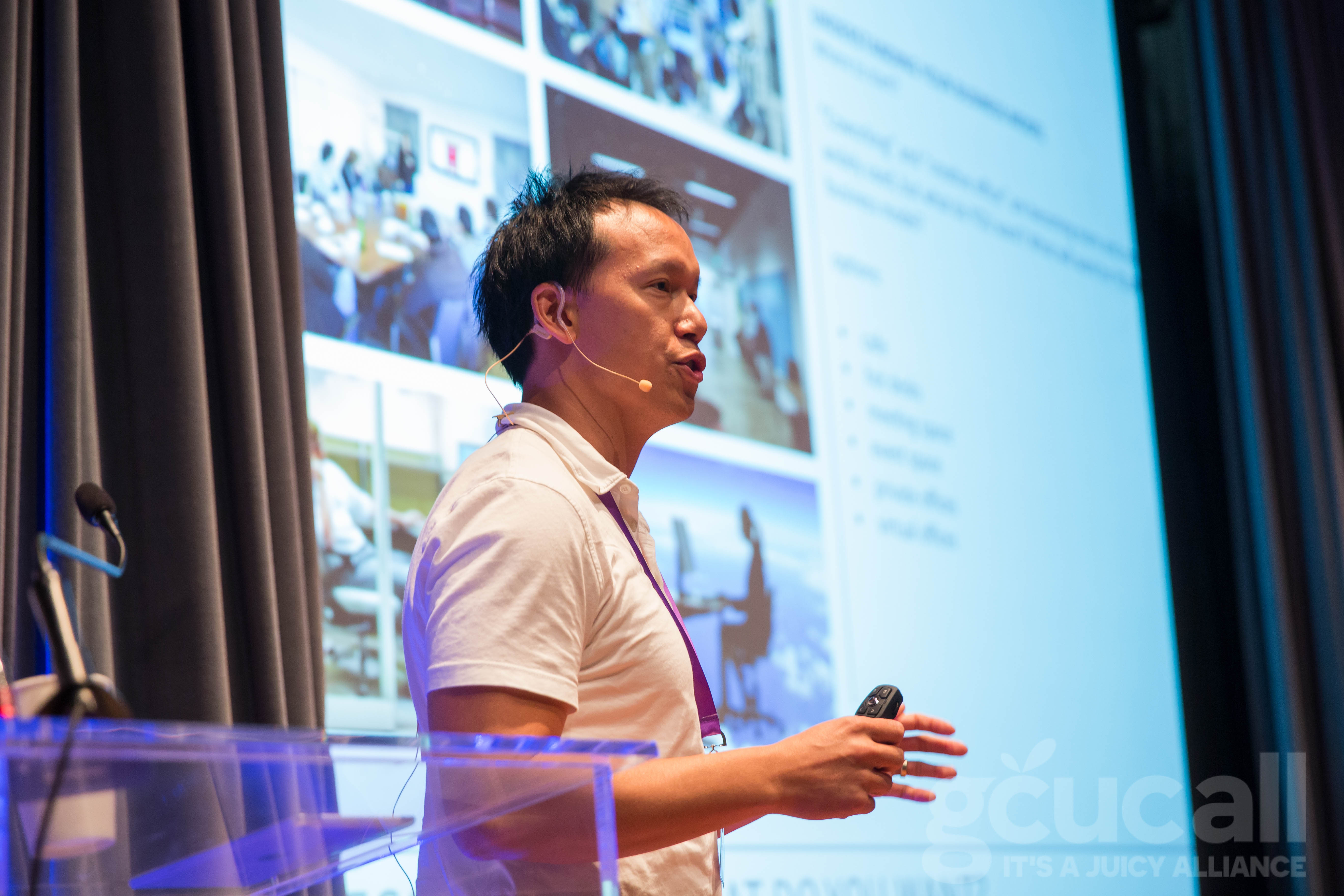Since launching BLANKSPACES in 2008, Jerome Chang has made a respected name for himself in the coworking arena.
As the first coworking space in SoCal and one of the first in the US, Jerome has become a go-to source of inspiration and knowledge. In fact, he put his experience to good use in 2011 by hosting one of the first national gatherings of coworking space owners and operators, which led to the creation of the League of Extraordinary Coworking and COSHARE.co.
It’s fair to say he knows his stuff. So when he took to the stage at Camp GCUC, the workshop for novice operators on day one of this year’s All.GCUC Conference in LA, OT’s Ceci Amador was all ears. Here’s what she learned:
On Design:
Jerome’s coworking space is BLANKSPACES by name, but not by nature. Design, he says, is all-important, as coworking and creative offices are slowly turning into one and the same thing.
A space that is “efficient, vibrant, and attractive” is your ultimate goal in coworking, as this enables you to use more of your space in a greater variety of ways, which is “the trick to revenue”.
Jerome discussed “design by numbers”, which associates the architecture and design of a coworking space with the actual revenue, and made the case for good design not only attracting prospective members but also underlying retention.
On Starting from a Blank Canvas:
“People don’t have to be in your space, they pay to be in it,” Jerome says.
This is why coworking operators need to provide a range of spaces to meet their members’ incredibly varied needs — such as lounge areas, private suites, meeting rooms, and virtual memberships — which enables operators to extract the most revenue from their space.
When planning the buildout, open-floor plans are generally cheaper to build. But it’s important to offset large open spaces with smaller private areas such as offices, and especially meeting rooms. They may be expensive to build and furnish but they generate a high percentage of revenue per square foot. Yet even meeting rooms have their downfall in that they’re a variable source of revenue, rather than a fixed income.
Operators must also work to reduce ‘dead’ or loss-making space where possible. For Jerome, hallways sit at the top of his hit list: “They’re lost revenue for me and people hate them” he says.
“It’s a back and forth figuring out which combination of spaces you want to have, and how much of each,” says Jerome, but ultimately it’s a calculation new operators must figure out.
On Community:
“Coworking is all about community. I believe the ‘work’ part of coworking should be as attractive as the ‘co’ part.”
To reach this objective, Jerome says that it’s important to give members the feeling that they can work anywhere without encroaching on private spaces. Furniture orientation can help separate zones and create private or shared spaces, without using obstructive or ugly partitioning.
In fact, Jerome takes that idea one step further: “I choose my furniture first. I never stop designing the space; I keep tweaking it.”
Keep an eye on #AllGCUC on OT Twitter and Facebook for the latest updates from ALL.GCUC.
Feature image via Vincent Perini


 Dr. Gleb Tsipursky – The Office Whisperer
Dr. Gleb Tsipursky – The Office Whisperer Nirit Cohen – WorkFutures
Nirit Cohen – WorkFutures Angela Howard – Culture Expert
Angela Howard – Culture Expert Drew Jones – Design & Innovation
Drew Jones – Design & Innovation Jonathan Price – CRE & Flex Expert
Jonathan Price – CRE & Flex Expert













